The weather outside is frightful, but the birds are so delightful! I loved all of these videos, but I especially enjoyed ‘Morning Highlights’ (watch DNF and Mr. North in the eight and ninth minutes) and both Flyway videos. North America’s great boreal forests and grasslands have emptied out, but a few hardy birds are still heading south through a winter wonderland. Look for swans, Canada geese, sandhill cranes, bald eagles, ducks, and coyotes on ice!
Here’s to short days, long nights, and a year of watching, sharing, learning, and caring! Stay warm, everyone…winter has finally come to the 43rd parallel!
Decorah North
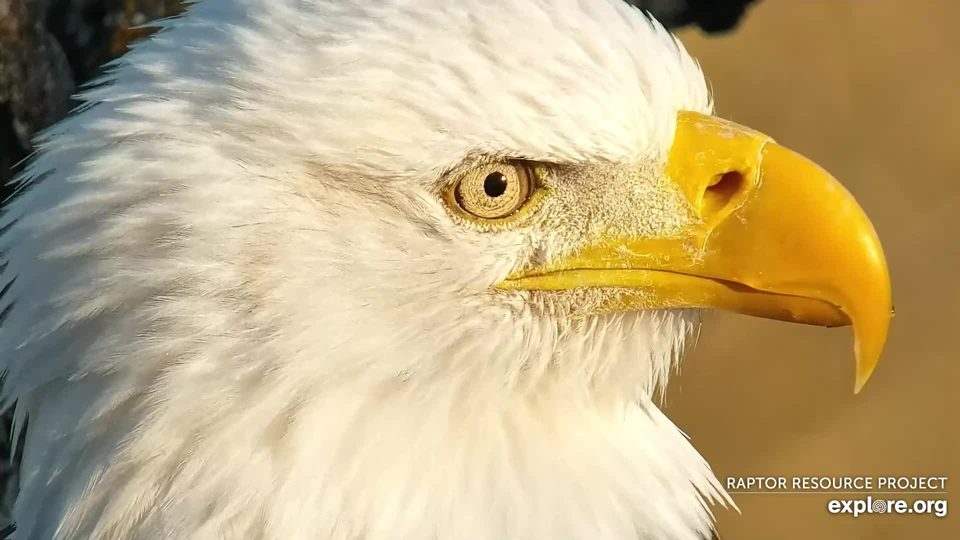
December 8, 2021: It’s cold at the 43rd parallel. Handsome Mr. North soaks up the sun whenever he has a chance!
December 8, 2021: Morning highlights – https://youtu.be/Gqi7jSOB_9k. The video opens with two visitors arriving at around 7:05am. Okay, somebirdy called a breakfish meeting and didn’t bring any cawfee? The Norths chase some early morning visitors away before beginning work on the nest. Mr. North grabs a large stick at 2:48 and tries to place it before DNF gets involved. Against a backdrop of visitors, the two continue to work on the nest. Look for a stick tug-o-war at 8:27, followed by a game of peek-a-boo tail (who’s that under my tail?) at 8:40, and a very brief but affectionate nip at 9:18.
Bald eagles are famous for their whirling nuptial flight, but eagle courtship includes any activities that establish a new pair bond or renew an existing one. This video is an excellent look at eagle bonding: Mr. North and DNF are pecking, footing, body brushing, vocalizing, defending their territory, and displaying their interest in one another and their shared nest. Daylight length is decreasing, but Mr. North and DNF’s bond is growing.
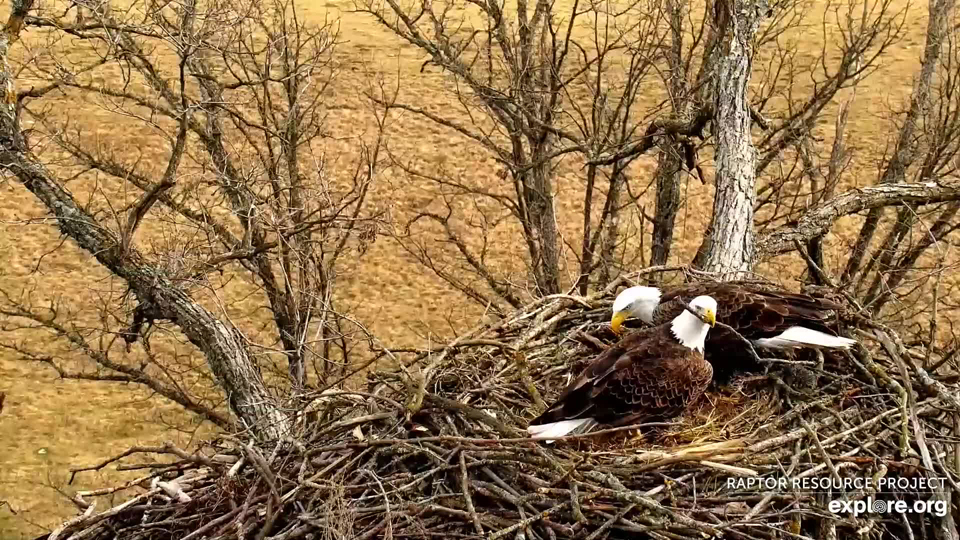
December 9, 2021: Mr. North is an excellent nestitect, but DNF usually gets the final say on stick placement!
December 8, 2021: DNF harvests a stick and flies it to the nest – https://youtu.be/Ot3NgF-gyyk. We’ve been going into eagle nests in Iowa and Colorado for a whole lot of years. Something we’ve learned: bald eagles almost always use dead sticks for nest building. Dead sticks break away from a tree more easily than live/green sticks. They also have less bark and strip more easily, which makes them more resistant to rot/composting. We’ve watched the Decorah and Decorah North eagles appear to prepare/farm sticks for removal by nibbling at them and removing bark before harvesting. I would love to know how much stick harvesting is based on recognition (“That stick is dead!”) versus preparation (“That stick is ready for harvesting!”). DNF is a master builder and perhaps a master stick farmer – totally on point for a proud Iowa eagle!
Mississippi River Flyway
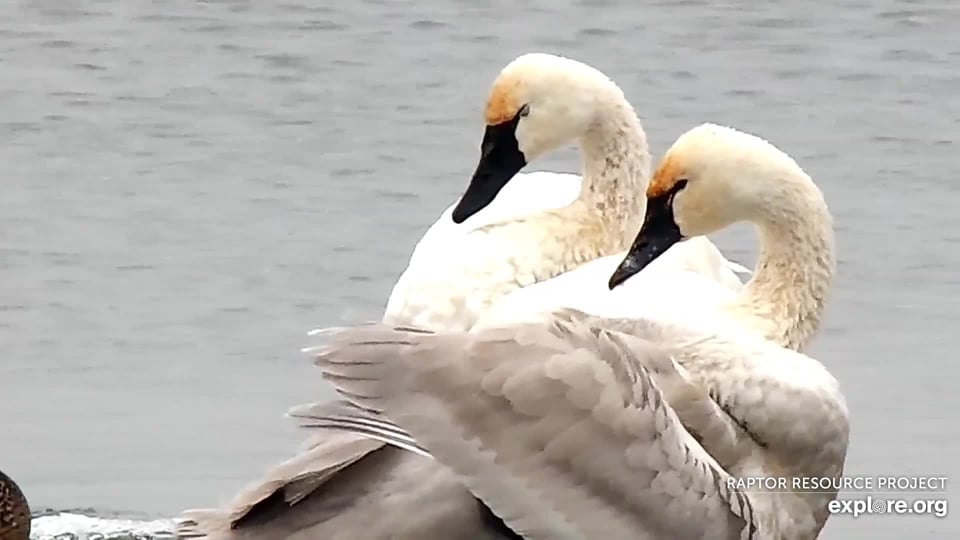
December 8, 2021: Tundra swans on the Flyway. When I was young, we didn’t see bald eagles or falcons or swans. I am so, so grateful to see them now – a gift from our past to our future. We can make a difference for good!
December 9, 2021: Young tundra swans – https://youtu.be/hCWb72MHB4Q. This video is beautiful! Young tundra swans probe deep to dig out bits of vegetation while mallard ducks float by. I can’t get over the arch of their long necks, their beautiful feathers, their comfort in the water, or the adult keeping watch over the younger swans. Note that the ducks aren’t going bottoms up! Puddle ducks tip up to feed at 12 to 18 inches, but tundra swans feed as deep as three feet. The two have pretty similar diets, but size sorting reduces competition and expands foraging habitat. Good luck, everyone – we’ll see you next year!
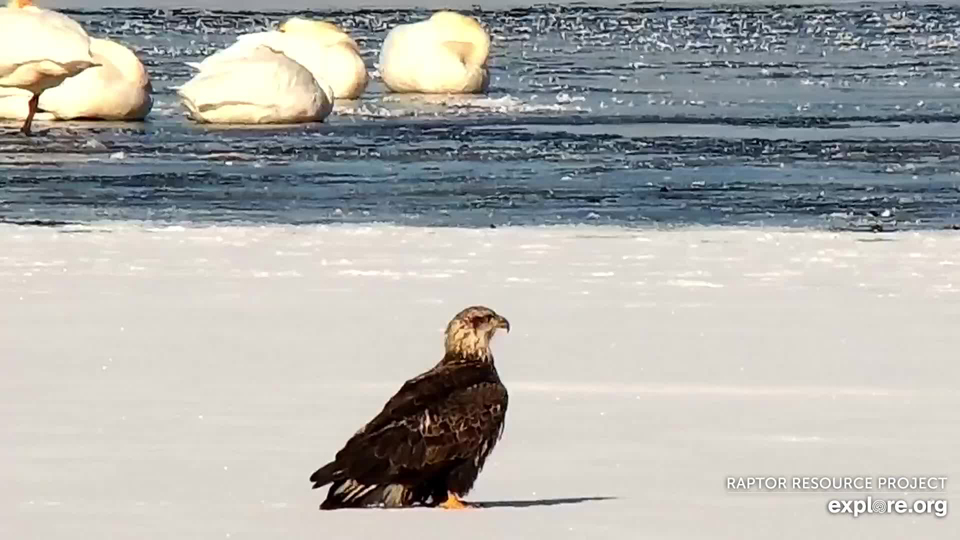
December 8, 2021: Subadult bald eagle, migrating tundra swans. Two species with very different life histories forage on one of America’s greatest migratory flyways.
December 8, 2021: Winter wonderland! https://youtu.be/xP6gwOePrBQ. Happy amazing holidays from the Flyway! The river is icing over, the very last migrating birds are leaving the northland, and I love everything about this video. Look for tundra swans, sandhill cranes, Canada geese, bald eagles, buffleheads, mallards, and goldeneyes (I think). The video opens with multiple species foraging in the water and on the sandbar. Look closely and you’ll see how size and depth influences foraging habitat! We get some close-ups at 1:46 as swans and ducks dip and dive for food, a beautiful subadult eagle at 2:35, a close-up of sandhill cranes at 3:04, and chasing eagles at 4:19. We are walking in a winter wonderland!
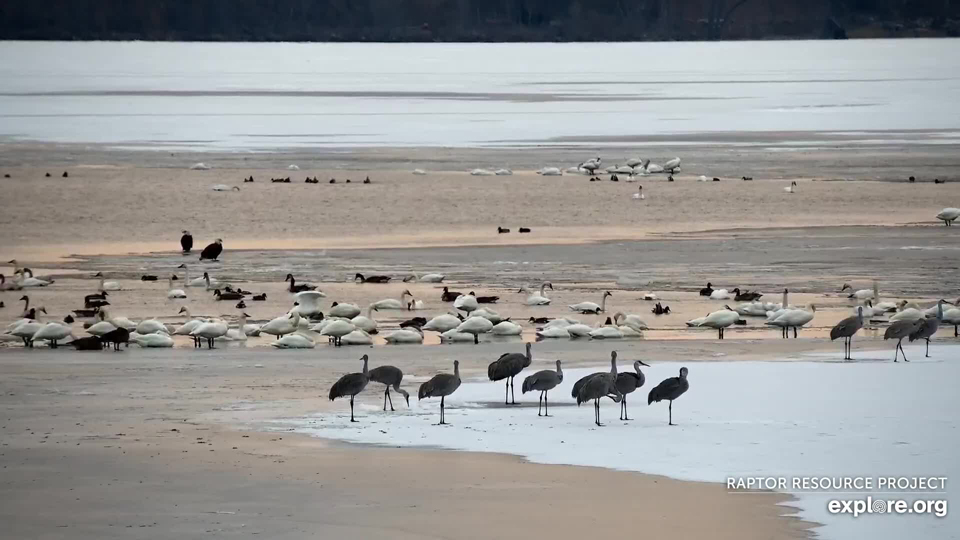
December 8, 2021: Migrating birds on the flats of Lake Onalaska. Tundra swans and bald eagles leave the northland late and these sandhill cranes are real laggards! Back in 1970, there was almost no shallow water habitat for them, so they weren’t here. No food, no birds! Also: terribly polluted waters, no birds! Also: DDT, no birds! Things are really tough and it sometimes seems like we can’t come together any more. But we did then and we can now, and here’s proof that it matters!
December 8, 2021: Coyotes run on the frozen lake – https://youtu.be/kS3Dg1ZJ-F8. It’s coyote time! The ice is too thin for people, but plenty thick for coyotes. The brand new winter wonderland means that they can cross parts of the river, hunt in new places, and explore! As Coyote Yipps says: “Coyotes are innately curious, inquisitive and nosy: they have a need to know. So they are compelled to investigate, to test new objects: it’s a survival skill.”
Curious about coyotes? Check out the Coyote Yipps blog. This long-running blog about coyotes is one of the best places on the web to learn more about them: https://coyoteyipps.com/.
Odds and Ends
We thought the Flyway migration was a little late and RRP’s master bander David Kester said the same thing about hawks this year. They were a little later and a little more dispersed than we are used to seeing seeing them: no giant flights and very few big days, especially at the Decorah station. We weren’t the only ones to see a change – the sandhill cranes at Indiana’s Jasper-Pulaski Fish and Wildlife Area were also a little behind! thanks to Michelle Pepper for the link! https://news.wttw.com/2021/11/26/sandhill-cranes-heading-south-finally-late-migration-sparks-concern.
Culture shock: how loss of animals’ shared knowledge threatens their survival: https://www.theguardian.com/environment/2021/aug/13/culture-shock-how-loss-of-animals-shared-knowledge-threatens-their-survival. Interesting, sad, and fascinating. A lot of us grew up in an era where it wasn’t acceptable to acknowledge that animals could have culture, internal lives, or feelings. I understand the dangers of anthropomorphism quite literally, having gotten tagged on the arm when I decided (incorrectly) that a falcon and I had the same understanding of an event. But just because they don’t think or feel like us, doesn’t mean they don’t think and feel. I hope we can do better by our wild fellow travelers.
 The Raptor Resource Project
The Raptor Resource Project The Raptor Resource Project
The Raptor Resource Project